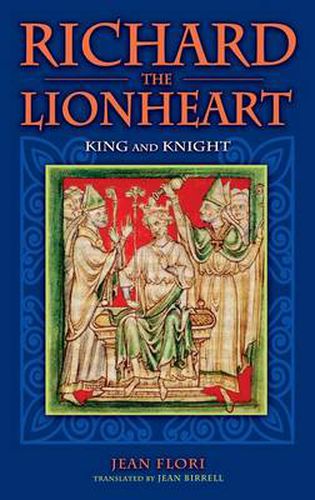Readings Newsletter
Become a Readings Member to make your shopping experience even easier.
Sign in or sign up for free!
You’re not far away from qualifying for FREE standard shipping within Australia
You’ve qualified for FREE standard shipping within Australia
The cart is loading…






Richard I, the Lionheart, remains forever (and perhaps wrongly) the mythical king of England who preferred to wage war than to rule over his empire. The familiar epithet conveys all the principal features of his indomitable character: courage, valor, prowess, the pursuit of glory, the thirst for fame, generosity in war and peace, a sense of honor combined with a sort of haughty dignity made up of both arrogance and pride. In this book, Jean Flori examines both Richard’s role as prince and king in history, and also analyses the different and sometimes controversial elements which, for the chroniclers of his day, helped to make Richard a true model of chivalry.
Among the questions addressed are: What influences formed his character and determined his behavior, real or assumed? Why did the image of Richard as a king who was also a knight so quickly and so soon supplant all others, creating a quasi-definitive point of reference? Why did Richard deliberately, it would appear, choose to present himself in this chivalric guise and disseminate this image of himself by what we would today call a media campaign, using all the methods then at his disposal, limited perhaps but by no means ineffective? Last but not least, what is the historical and ideological significance of the choice and, even more, success of this image, which has been adopted by history and disseminated by legend, an image based on historical accounts and documents in which history and legend are sometimes inextricably interwoven? The first part of the book takes a straightforward chronological approach to Richard’s life, from his birth in 1157, through conflict with his father, Henry II, and his brothers, to his coronation and his years of crusading and fighting the French; culminating in his death in battle in 1199. The second part analyses Richard’s image in relation to medieval chivalry.
$9.00 standard shipping within Australia
FREE standard shipping within Australia for orders over $100.00
Express & International shipping calculated at checkout
Richard I, the Lionheart, remains forever (and perhaps wrongly) the mythical king of England who preferred to wage war than to rule over his empire. The familiar epithet conveys all the principal features of his indomitable character: courage, valor, prowess, the pursuit of glory, the thirst for fame, generosity in war and peace, a sense of honor combined with a sort of haughty dignity made up of both arrogance and pride. In this book, Jean Flori examines both Richard’s role as prince and king in history, and also analyses the different and sometimes controversial elements which, for the chroniclers of his day, helped to make Richard a true model of chivalry.
Among the questions addressed are: What influences formed his character and determined his behavior, real or assumed? Why did the image of Richard as a king who was also a knight so quickly and so soon supplant all others, creating a quasi-definitive point of reference? Why did Richard deliberately, it would appear, choose to present himself in this chivalric guise and disseminate this image of himself by what we would today call a media campaign, using all the methods then at his disposal, limited perhaps but by no means ineffective? Last but not least, what is the historical and ideological significance of the choice and, even more, success of this image, which has been adopted by history and disseminated by legend, an image based on historical accounts and documents in which history and legend are sometimes inextricably interwoven? The first part of the book takes a straightforward chronological approach to Richard’s life, from his birth in 1157, through conflict with his father, Henry II, and his brothers, to his coronation and his years of crusading and fighting the French; culminating in his death in battle in 1199. The second part analyses Richard’s image in relation to medieval chivalry.